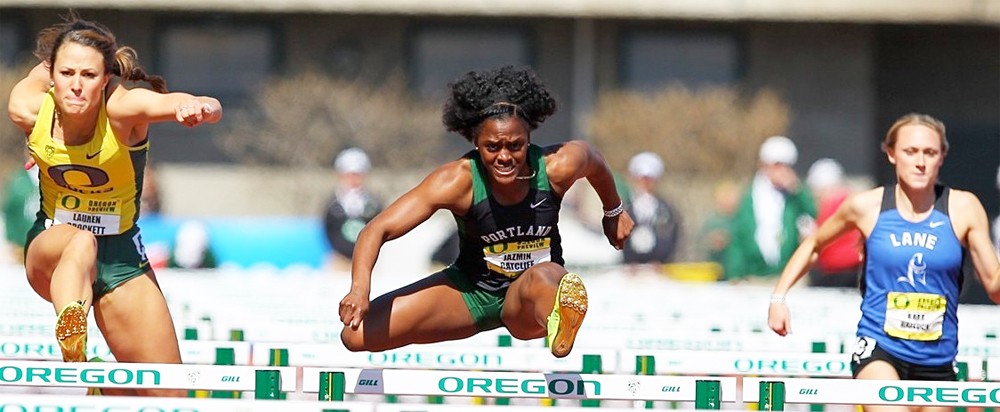Transportation nation
Having traveled by car over the Fourth of July, I had time to appreciate and celebrate freedom, primarily the freedom to wait in traffic while the sun shines through the cancer fumes, which I have the freedom to sit in and breathe. As is true for freedom in general, these freedoms were not granted to us, but forced on us by powerful interests, who accidentally mislabel these and other horrors “freedom” whenever doing so will increase their power and profits. The freedom-bestowing power interest in this case was primarily General Motors, with Standard Oil of California (now Chevron), Mack Truck, Phillips Petroleum, Firestone and others following GM’s lead.
At the end of the 19th century the U.S. started to develop an extensive streetcar and railway public-transportation system. In 1893 Oregon had the first inter-urban electric rail service in the country, with an electric rail line running between Oregon City and Portland. The Portland area developed an electric streetcar system that stretched from Vancouver to Oregon City and from Forest Grove to Estacada, with daily trains to Eugene, Salem, Corvallis and other cities in the Willamette Valley.
In 1922, General Motors started destroying clean and efficient electric streetcar systems, like Oregon’s, all throughout the country. Because one streetcar can eliminate 35 cars from the road, and one train can eliminate about 1,000 cars, it makes good business sense to do so. Over a 30-year period GM did to public transportation what the Bush administration would like to do to public education and Social Security today: take a popular system that benefits people, present it to the public as a troubled failure, destroy it and replace it with a system that benefits wealth. This is of particular importance when the new system will minimize ordinary human sentiments, and replace them with individualist consumerism.
In the ’20s, GM was the major shipper of freight on U.S. railways, and the major depositor in the nation’s banks. According to Bradford Snell, a former antitrust attorney for the Senate who spent 16 years researching GM’s practices, GM was able to persuade railways to abandon their electric rail subsidiaries and threaten to use rival carriers unless railways replaced the streetcars with GM buses. Then GM used the electric railways’ banks to persuade the railways to do the same.
In 1935 the American Transit Association censured GM for attempting to motorize Portland’s electric streetcar system.
In 1948 the government accused GM, Standard Oil and others of having “conspired to obtain control of local transportation companies in at least 44 cities in 16 states in different sections of the country, in order to restrain and monopolize interstate commerce in buses,” petroleum and other supplies. Sadly, the most powerful nation in the history of the world was unable to stop the conspiracy, and could only fine the guilty parties $5,000 for having forced National City Lines to buy their products. National City Lines was one of the holding companies they had used to buy up and destroy streetcar lines, replace them with GM buses, and then resell the properties to local companies that had agreed to purchase GM bus replacements.
After World War II U.S. streetcar systems suffered from overuse. Those who would profit from their destruction said it would cost too much to fix and maintain the streetcar lines. GM advocated the smelly, clunky, loud, carcinogenic bus system, and promoted it as the inevitable march of progress. Because buses are the less desirable form of public transportation, with the streetcars gone car ownership became a more desirable option. In making the public transportation system fail, GM helped to implement an even more disgusting, carcinogenic, and inefficient, though profitable, automobile system.
The government’s solution to America’s costly public-transportation problems came a decade later, when the fiscally conservative Eisenhower administration signed into law the Federal-Aid Highway Act of 1956, which appropriated $25 billion to construct more than 40,000 miles of interstate highways over a 10-year period, in what was the largest public-works program in U.S. history. Total expenditures were $80 billion over the next 25 years, according to the Federal Highway Administration, with tens of billions of additional dollars spent since.
A world in which people feel a sense of community, where people are connected to and care about each other, would be nice, but such a world is less profitable than one in which isolated individual consumers live alone, eat in front of the TV alone, and consume, consume, consume alone.
We could design cities and their suburbs so that there is that sense of community, and public transportation is clean, reliable, runs as people want it to and can get them where they need to go in the most efficient manner possible, making the automobile mostly unnecessary. Instead we’ve designed cities and suburbs so that the dominant mode of public transportation is the undesirable bus system, making individual automobile ownership a modern necessity. We should remember, however, that what looks like failed planning or idiocy usually puts money into some rich fellow’s pocket.



